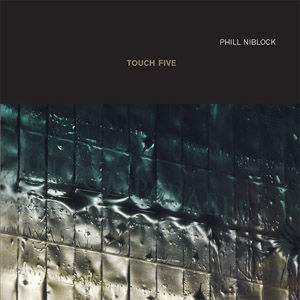 Phill Niblock is an artist that, despite his penchant of expansive, subtle and nuanced recordings, always seems to make every release an epic one. His fifth album for the label (hence the title) is yet again another double disc one that holds only five compositions. Although it takes a conceptually similar approach to those albums, namely Niblock's use of layered instrument drones with microtonal adjustments to pitch, it still has a different feel when placed alongside his other releases.
Phill Niblock is an artist that, despite his penchant of expansive, subtle and nuanced recordings, always seems to make every release an epic one. His fifth album for the label (hence the title) is yet again another double disc one that holds only five compositions. Although it takes a conceptually similar approach to those albums, namely Niblock's use of layered instrument drones with microtonal adjustments to pitch, it still has a different feel when placed alongside his other releases.
The first disc is comprised of two compositions for classical stringed instruments."FeedCorn Ear" (for cello) is unsurprisingly made up of long, bowed notes that seem to stretch into eternity with Niblock's post-production consisting of a very light touch, but one that emphasizes the hidden microtones and natural audio variations.Arne Deforce's playing deserves recognition as well, as his steady hand enhances the purity of sound that Niblock deconstructs. The different layers rise and fall, twisting and turning like braided wires of pure sound into a massive sonic expanse.Toward the end of its 30 minute duration, only the slightest traces of cello remains and instead is simply a cloud of delicate tones and sound. In total it is a lighter work compared to Deforce's performances on "Poure" and "Harm" two cello compositions on previous Niblock releases.
The second piece, "A Cage of Stars," is for electric harp and performed by Rhodri Davies with both a traditional bow and an e-bow.Leading off with a bit of sparkling noise, it soon settles into a sustained wall of microscopically shifting tones that build atop one another.Towards its conclusion there is a much more significant emphasis on the lower end of the spectrum, which again ends it in a different place than it began.Even though it is just a single performance, the layering and tweaking to the final results in a composition that sounds as if it were performed by an entire orchestra.
Disc Two consists of three different performances of the 23 minute composition "Two Lips" by three different guitar quartets.Each player performed the score ten times in a single session with the faintest of tonal variations.The first, performed by Zwerm, is surprisingly inorganic sounding at first blush due to a heavy use of effects, but eventually takes on a more traditional electric guitar sound.The fuzzy leading tones trade off with each other with each player shifting from lower to high register drones being produced.
The second performance, by the Dither guitar quartet, begins with a more intense approach, with organ like wavering sustains cutting through the tonal mass sharply.Towards its conclusion the liberal use of flange and chorus effects imbues it with a distinct feel, getting a bit more psychedelic in the process.The final performance, by the Coh Da quartet (Ad Hoc, featuring Robert Poss and Susan Stenger) comes across as even more abstracted from guitar, with each player producing passages resembling organ and harmonium drones than traditional electric guitar.
Phill Niblock's work is often challenging, and Touch Five is no exception.It requires a focused and dedicated ear to absorb the slow changes and evolution in these long compositions.For those with the time and the patience though, his work rewards like no other in its purity and hidden complexity.
samples:
 
Read More

